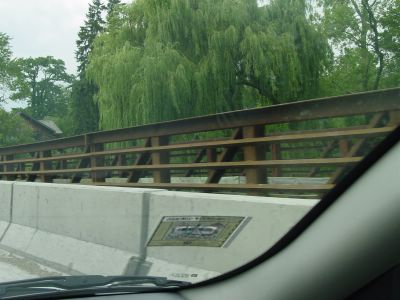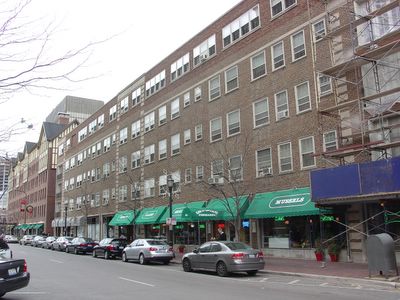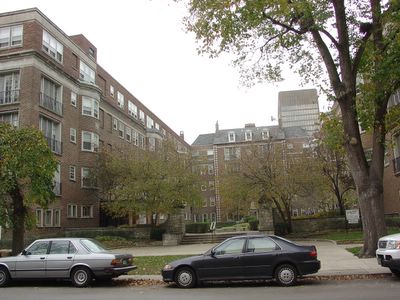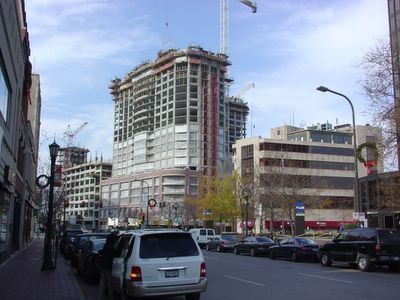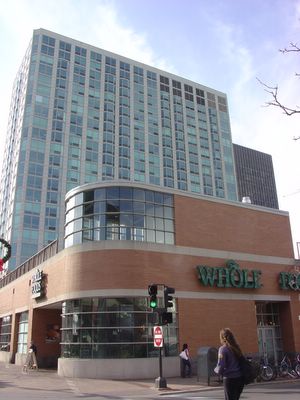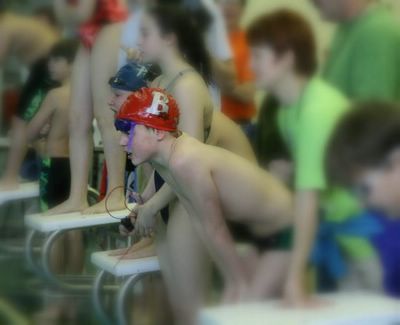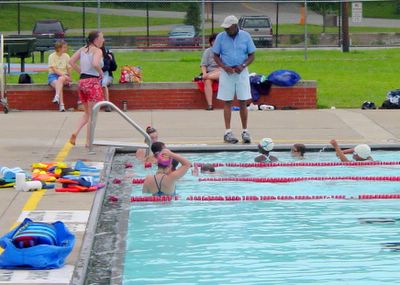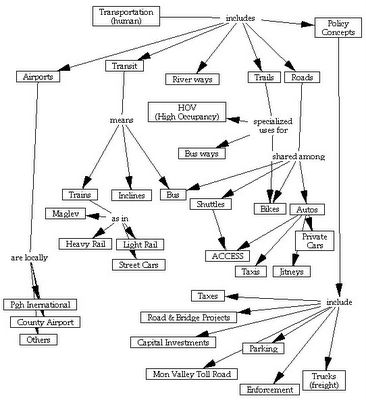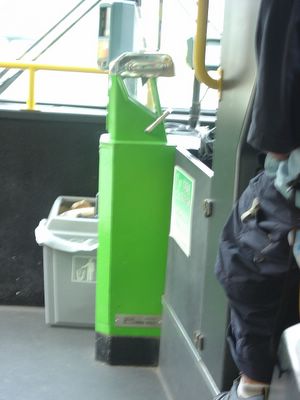Let's sort through another pile of B.S. about our schools from the light of the Post Gazette. It becomes another great example of exactly how we should NOT operate in this city.
City plan for high schools may mean big change City plan for high schools may mean big change
Study will be unveiled this week
The task force was a closed door process. The task force didn't keep minutes. The task force didn't hold open meetings. The task force was full of hand-picked "yes" people. The task force for right-sizing for K-8 from a year ago had NO people from the ranks of the teachers. Meanwhile this task force is way to heavy from the ranks of the teachers and administrators. The task force is built to curb dissent.
From the get-go, the high school task force efforts are suspect.
Mark Roosevelt dispatched a tiny, select (elitist) group of administrators and boosters. The process was designed to shut out throngs of others as volunteers. Citizens and parents were shut out of the process. This public school district acted as if it was a foundation board operation. Homework wasn't done with any peer review.
The success stories from around the country always point to one main theme. No matter what -- communities with high performing schools have high performing students and tons of parent engagement. It takes a village. Everyone gets involved in every capacity in many dimensions. Then the students, staff, teachers, administrators and board performs.
If you want to sustain the failures -- lock out the parents in talks of reform. Mark Roosevelt fumbled as did this high school reform weenie group.
There is nothing more critical than parent engagement. Nothing.
Furthermore, that's the one element that is the weakest in our public school landscape.
We do have poor test scores. Pittsburgh does have high dropout rates. Dropouts and failed tests take a back-seat to how the school district slams the door in the face of its parents, customers, neighbors, ministers, coaches, advocates, voters, citizens, business owners, unions, employees.
Let's check out success stories of schools around the country, and the world. Let's look at how parents and families can soar in their educational lives -- by working together.
The Pittsburgh Public School district is academically troubled. It isn't financially troubled. But its biggest sticking point is its trouble when dealing well with its populations and especially parents.
There is a brain-packed trend to mull upon. Let's take our big, mostly empty, poor performing schools and say we're going to make them into smaller schools and call this a success. Our schools are shrinking because the people who can depart. The grass is greener in other school districts for many people, so they leave. They vote with their feet. They get feed up with the helpless feelings and blocks put up from the school landscape.
So, the pathway to victory is to have smaller schools! What????
We've got smaller schools!
Don't shoot for the size of the school. That was the same line of poor logic that was pushed down upon the citizens in the rightsizing plans of last year with the K-8 reform.
Parents don't give a rat's ass about the size of the school. Nor do voters and taxpayers.
We want schools where people learn great lessons! We want educational institutions that teach our kids how to become productive citizens in today's marketplace.
We want the school district to bring value to our communities. That means a district with a mandate to educate students ages K to 12th grade should focus on K-12 education and do a good job there. That means that the Pittsburgh Promise is out of bounds and not a high priority, when a majority of our kids can't pass 9th grade algebra.
Algebra is A + B = C. Pittsburgh Promise is Z. It doesn't matter. Smaller Schools is Y. Y and Z don't matter.
What is this 'capping of school size' trend? Elitist! Why cap and make haves and have nots?
I don't want caps. I don't want glass ceilings. I don't want to keep kids down. I don't want to prohibit excellence.
I want gangplanks to greatness. I want a rush to results. I want satisfaction to skyrocket.
He wants speed limits. I want hyperdrive.
Mr. Roosevelt wants to propose "breaking schools." News flash: The schools are already broken. How about if we "heal schools." The thing to do is "heal students." Fix the educational landscape of families in this region.
Let's think about "semi-autonomous 'learning communities'" for a few moments. I think that the best semi-autonomous learning community is a family. Furthermore, a thriving learning community isn't semi-autonomous. It is engagement and embrace of all assets and resources. To be semi-autonomous means you have to exclude and build walls.
Think of the internet. I want it everywhere. IP everwhere. I want learning everywhere. I want all resources at the ready and at our disposal when it comes to real learning enviroments.
The learning community here -- is called ... earth, if not universe. Pittsburgh Public Schools needs to play a dynamic role within our global marketplace of thinking, ideas and lessons. I think a call to 'semi-autonomous learning community' is really not about being in a modern urban community. The "semi" part must be the code word for thinking with only half your brain.
Enrollment at small high schools often is capped at 300 to 500 students.We had a small high school -- South Vo Tech. It was closed. They called it too expensive. It was too expensive because it was too small. We turned our backs on those students in recent times and now we're saying what they had was just what we want. Unreal double-talk from a clueless district.
So, if we really want 'small communities of learning' -- then I look forward to the re-opening of South Vo Tech. The truth hurts. Their statements are lies, but they can be put to the test.
We've had small schools in K-5 settings that were 'capped.' They too were closed because the size of the school was not fitting into the cookie cutter model that the school district wanted in its rightsizing agenda. The schools were filled. The schools were closed anyway.
This is all wrong.
You need to put the right number of kids into the right sized buildings. Furthermore, the buildings are already built. The buildings are there. So, the factors are numbers of students.
In very recent times the bone headed school leadership has been saying that this school should have 500 students -- but the building is only able to contain 400 or 350. So, there are a number of building expansion plans to make these buildings fit the number that some rightsizing plan wrongly requires.
The concept that Pitsburgh's old school leadership needs to consider in every discussion is
capacity. If a school or even a bus functions with X amount of bodies -- then that's where we start.
Schools that are filled to capacity should not be closed.
For PAT, bus routes that are filled to capacity should continue to operate.
Meanwhile, Pgh Public School District spent a lot of money to rehab the once great Westinghouse High School. The building is majestic. It is modern and bright and jewel for any student, staff, teacher and community group. But in the real world of today's educational landscape, Westinghouse High School functions at a fraction of its ideal capacity -- based upon its building size.
Let's cap these learning communities based upon the existing building capacity. This is a functional measurement that goes into the forumula right from the beginning.
You don't try to cram 10-tons of students into an 8-ton container.
We've got schools that have been rightsized and they are jammed.
An honest approach to space would be welcomed. The A+ Schools report should contain a much better inventory of the phsysical assets, for school buildings, open and closed.
As South Vo Tech shrunk in its number of students, the thrid floor was closed. Students didn't attend classes in those classrooms. Easy adjustments need to be a priority.
The luckiest districts have financed restructuring with millions of dollars committed by the Bill and Melinda Gates Foundation.I'm not looking to live in a lucky district. I don't want to live in a 'lucky town.' I want to live in a place where we value and teach how to be self reliant. I want our schools to be valued for doing an excellent job in teaching our kids -- and luck has little to do with that mission. It is hard work dealing with everyone. It is hard work to put all the facts on the table and really get to understand a topic area -- and not have a blind spot. I want to say that Pgh Public Schools can thumb its nose to soft money of the Gates Foundation. That money can go to hopeless places -- like Philly -- where they have two stand alone slots parlors and are really lucky.
Listen to this double talk. First, "The traditional American high school is really an anachronism.
It was designed 100 years ago and really hasn't changed much since," said Naomi Housman, director of the National High School Alliance. As a result, she said, many schools aren't preparing students for today's world or holding students' interest on a daily basis. "They want to be engaged," Ms. Housman said. "They're just not finding it in the traditional high school.
Second, we are told this task force ran around the nation looking at schools throughout the country.
Don't paint with a broad brush. Some schools work. Some don't. And more to the point. Some schools are going to work for some kids while they fail other students. I'm a Libertarian swim coach so I understand the theme, "Different strokes for different folks."
The failure that makes the continual theme of hopelessness stems from the lack of choice.
Of course the trickle-up campaign didn't work. That's more smoke and double-talk.
Kati Haycock, director of The Education Trust, said high school improvements for years took a backseat to elementary school restructuring. But the desired "trickle-up" effect -- the idea that good habits established in primary years would pay dividends in high school -- didn't materialize.
You want a good high school, work on high school education. You want good pre-school -- focus on pre-school education. You want a good high school, don't focus on college education when the kids are in the K-12 setting. Stick to the focus area. The Pittsburgh Promise is a trickle-up idea that is going to flop.
I've been a stay-at-home dad who has objected to advanced pre-school efforts in the educational community. Head start is nice for some. But, head-start programs should NOT be mandatory. Head start programs might make great head-start programs, but they are NOT the key for making great elementary schools. We could use some head start efforts in the community. But, I don't want to see the school district spend a lot of effort in that domain. A K-12 district needs to cooperate with head start educators and parents. But, a K-12 district, needs to focus on K-12 students.
Mr. Roosevelt has called high school improvement the year's top priority -- and I think his stance is nothing but a joke. If Roosevelt wanted to tackle high school education he'd be doing a dance with the public. He hides behind a task force of hand-picked cronies.
There are many things that can be done to improve our high schools, and I'll cover them in depth. They have not been done for years. The ideas I want to advance are cheap. They'd make a huge improvement. They would have happened already if Mr. Roosevelt and the board really cared. I think these folks are motivated by CYA tactics. They want to talk the talk, yet cover they're backsides. Few are really interested in making system wide changes and making those changes stick in the greater community.
Voting with one's feet looks like this:
35 percent of city students, including nearly half of all black males, drop out of high school. Other students, dissatisfied with academics and environment, opt for charter or suburban schools.
I don't want a task force to shape a plan. I want a school board and superintendent to shape a plan. I want to engage the public in efforts of peer review so as to shape a future.
District Chief of Staff Lisa Fischetti said board members tomorrow will hear about lessons the task force has learned and how that information will shape a plan, to be unveiled in the spring, for improving city schools.
Information that should shape a plan is called 'data.' The data should be online for all to see.
Here is another task that a real task force might do. Examine the data collection and data reporting to the public. Examine the formulas for operations in Pgh Public Schools and beyond. Make accountability evident in both school performance and finances. I want to know teacher, building, classroom, grade and subject perfomances -- in real time. This would be a fine task for a task force. Then we'd have transparent models and knowledge for making better choices.
This next statement give a serious worry for two reasons. First, evolution occurs in many tiny steps. Organic changes are healthy. Give us piecemeal. Don't give radical shifts that ignore the results of the past. The results of the students at the schools that were re-tooled were thrown out the window and not even published in the A+ Schools report. They want to churn and not keep a record of where we've been.
While some districts have remade high schools on a piecemeal basis, she said, Pittsburgh's effort will be system-wide change that builds on current "pockets of excellence."
There are pockets of excellence within the PPS, but they have never been noticed nor rewarded. Often, they are discounted. Furthermore, the pockets of excellence within the elementary schools, the magnet schools where foreign languages are taught from K and up, has been discounted. The right-sizing plans didn't center upon the pockets of excellence.
The gifted education plan is a pocket of excellence and it is under a cloud of cuts too.
Another worry: Let's not design a school improvement plan and lean upon marketing savvy. Put lipstick on a pig and claim victory.
Other than CAPA, a theme-based school, the next best theme was Vo Tech. And, South Vo Tech closed. If you liked theme-based schools, Janis Ripper, where you fighting for the continual operation of South??? I did.
"We liked the theme-based schools," said Janis Ripper, the principal assigned to coordinate the task force.
The buzz word, academies, seems more like a CYA task, given the recent rightsizing.
Ms. Ripper said team members observed enthusiastic instruction and innovative ideas, such as "academies" -- one example of a small learning community -- to isolate ninth-graders from upperclassmen in a building. But cold data on achievement gains were elusive.
Cold data was elusive. That's what I mean. We need a task force to uncover and insure cold data.
There is an educational trend -- new is better. New is better when asking to spend more money. New is better when you don't know where you are going. New is better when you didn't do a good job with the not-so-new.
"Some of the schools had some data," she said. "But one thing to keep in mind with high school reform: Because it is so new, a lot of schools were in the process of a two- or three-year plan. Data wasn't as available as we'd like."
Likewise, I'm certain that the data isn't going to be available to defend a massive change to the landscape of our high schools in Pittsburgh.
Paul Vallas, chief executive officer of the School District of Philadelphia, said he's pleased with a continuing overhaul there that's increased the number of high schools from about 50 to 80.
Exactly. "continual overhaul."
He said the district with 180,000 students, more than six times Pittsburgh's enrollment, has moved toward smaller schools with college preparatory curriculums, signature programs and dual enrollment arrangements that allow students to take college classes. Nineteen of the high schools are charter schools. In all, 30 district and charter high schools met federal performance standards last year.
Again, the good is the fact that there are some charter schools. But, the problem is that the Pgh Public School board and administrators have always been fighting the charter schools. They've put up many roadblocks to specialized private and charter schools.
The dual enrollment part is nice as it comes closer to what I'd like to see. Rather than dual enrollment, give
enrollment freedom. Get rid of the confinements of high school choice. Allow any kid in the city to go to any school. It can't be quite that simple, but it should be.
"I like to say we've gone from failure to adequacy. Now, the key is to get to excellence," said Mr. Vallas, who's faced some of the same academic and financial problems as Mr. Roosevelt.
Could someone please explain the financial problems of Pgh Public Schools. Just saying that they are there is not a real way to lead. That's call crying. Poor, poor us doesn't wash from my perspective. Why, exactly, does the district think it is with financial problems? -- Perhaps because of the charter schools???
No matter their neighborhoods, Mr. Vallas said, Philadelphia students have a choice of at least three high schools. BINGO. But our choice in Pittsburgh can be for eight or ten schools.
North Carolina's Charlotte-Mecklenburg School District offers signing bonuses of as much as $15,000 to build elite teacher corps at four low-performing high schools. ... Humm... Did you hear swim coach David Marsh is going to MAC and starting a program of excellence. His job brings a $1-million pay check. Interesting. Now we're talking "sizable."
Thanks for the article Joe.
Summary: A year long effort to reform our high schools is a wonderful idea. Too bad the process and efforts so far just compound the problems. I want to get to the roots of the problems, as do plenty of others. This article proves, again, to me, that Roosevelt's leadership is without a firm grasp of the keys to our situations.
Furthermore, I've got different ideas. Others have solid ideas as well.
